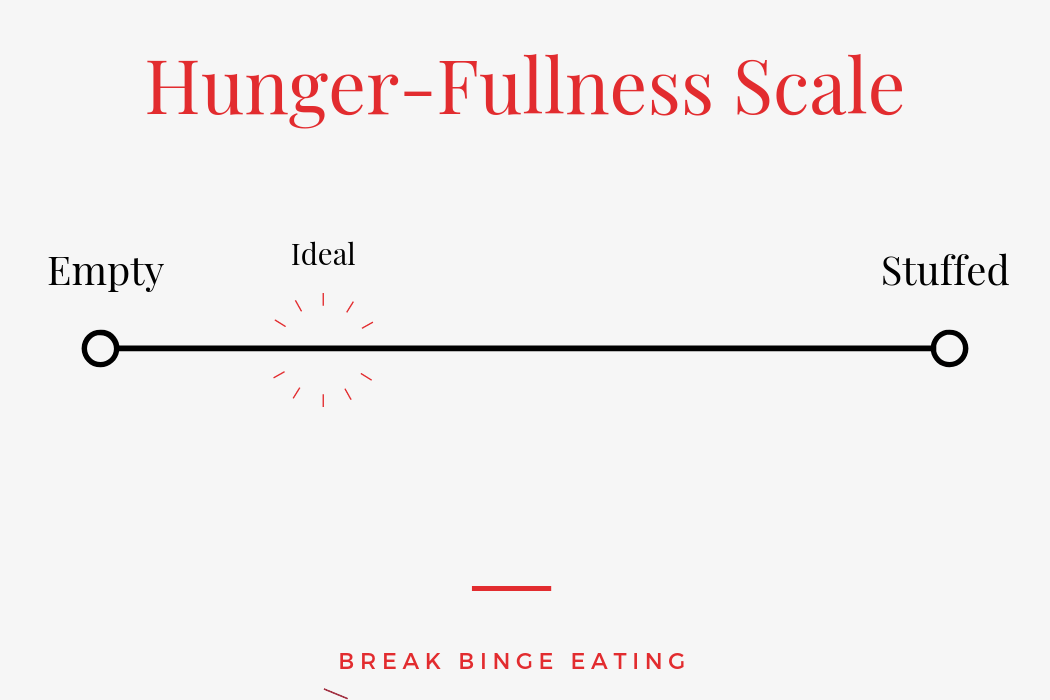Do you find yourself constantly jumping from diet to diet? Are you always thinking about when, what, and how much to eat? Have you forgotten the last time you were actually free from the internal and external constraints of dieting?
If you’ve answered “yes” to these questions, then you’re not alone. Dieting for weight loss is so common among many men and women. Unfortunately, however, dieting is not only ineffective at producing sustainable weight loss, but it’s also associated with many adverse outcomes, including binge eating, body image concerns, and compulsive exercise.
Abandoning the diet mentality and striving to adopt an intuitive eating approach could be highly beneficial for you. Intuitive eating is a style of eating that is guided purely by internal hunger and satiety cues. Adopting an intuitive eating approach has been shown in dozens of scientific studies to be associated with a range of positive health outcomes, including:
- Reduced blood pressure, blood lipids, and cholesterol levels
- Reduced disordered eating behaviours and body image concerns
- Improvements in self-esteem, self-efficacy, and depressive symptoms
These positive health benefits that arise from intuitive eating have been found in many different people, of all genders, ethnicities, and socio-economic statuses.
It can be very hard for someone to learn to trust their internal hunger and satiety cues. After all, if you’ve been dieting for most of your life, it might seem impossible at first.
Don’t despair. It is certainly possible to learn to eat intuitively. You’ll just need to implement the following steps
1. Say goodbye to dieting
It will be impossible for you to eat intuitively if you are still concurrently trying to diet.
The two approaches are incompatible – intuitive eating relies on internal cues (i.e., hunger and fullness signals) whereas dieting relies on external cues (e.g., self-imposed diet rules).
A great way to rid the diet mentality is to remind yourself of the success rates of dieting.
Research has shown that more than 80% of people who go on a diet for weight loss regain almost all the weight originally lost.
Considering this, and considering the fact that dieting causes various disordered eating behaviours and body image concerns, it should be easy for you to say goodbye to the diet.
2. Retrain your body signals
A core part of eating intuitively is to know when you are feeling hungry and when you are feeling full. Recognising these signals is important for you to begin trusting your body again. Like most people, however, it’s probable that you’ve forgotten what being truly hungry (and full) feels like. You need to retrain your ability to identify this. An excellent way to reconnect with your body is by using a “hunger-fullness scale”. This scale ranges from 0 to 10 where…..
- 0 = absolutely empty
- 2 = getting empty
- 5 = full
- 8 = overfull
- 10 = Stuffed full

Use this scale every time you plan on eating. Before each meal, ask yourself where you fall on this scale.
If you start paying attention to your body, after a number of meals you should have a better idea about what different levels of hunger and fullness feel like.
Ideally, you want to train yourself to start eating when you’re around a 2-3 on this chart. During your meal, pause for 10 seconds and check in again. Taking notice of how your internal signals might be changing.
Towards the end of your meal, check in one last time. You should be feeling fuller. Again, you want to get to a point where you stop eating at around the 5-6 mark. Stopping at this point may help with any subsequent discomfort or associated guilt.
Over time, and after a lot of practice, you should now be able to fully recognise when you’re hungry and when you’re full. Now you just have to eat according to these signals.
3. Practice mindfulness
Mindful eating involves being present and aware of what you’re eating, why you’re eating, and how you are eating.
Try the following when you’re eating next: Sit down. Turn the TV off. Put the phone away. Really focus on each mouthful. Chew a lot. After 3 mouthfuls, put the fork down for 20 seconds. Take in the site, taste, smell, and texture of the food.
Eating in this manner will help you better identify your internal hunger and satiety cues and will ultimately prevent you from eating in an uncontrollable, rushed-like state.
4. What do I feel like?
Before you intend on eating, ask yourself what you feel like.
As your body learns to trust that it can have a broad range of foods, cravings for, and overeating on, so-called “junk foods” will diminish and eventually disappear. Instead, you’ll start to make food-related decisions that are appropriate for your situation.
Practice these techniques regularly and you’ll be well on your way to learning intuitive eating. Remember, you’ll need to patient with this; don’t expect success overnight. Look for small improvements over time.
If you’re successfully able to eat intuitively, then you’ll surely reap the health benefits!


